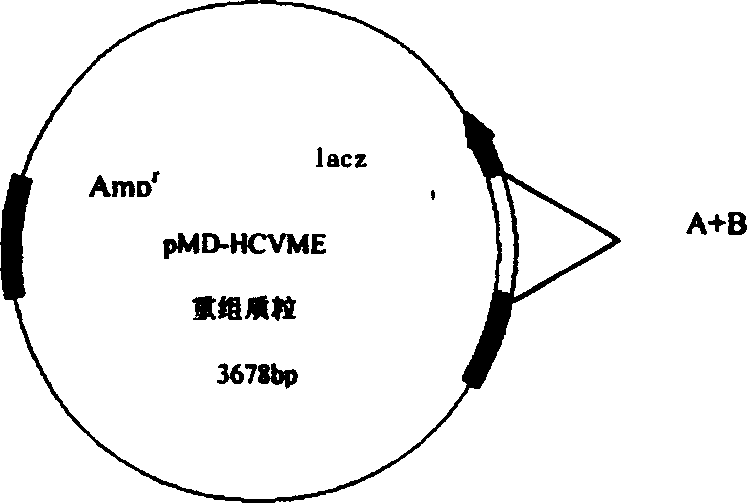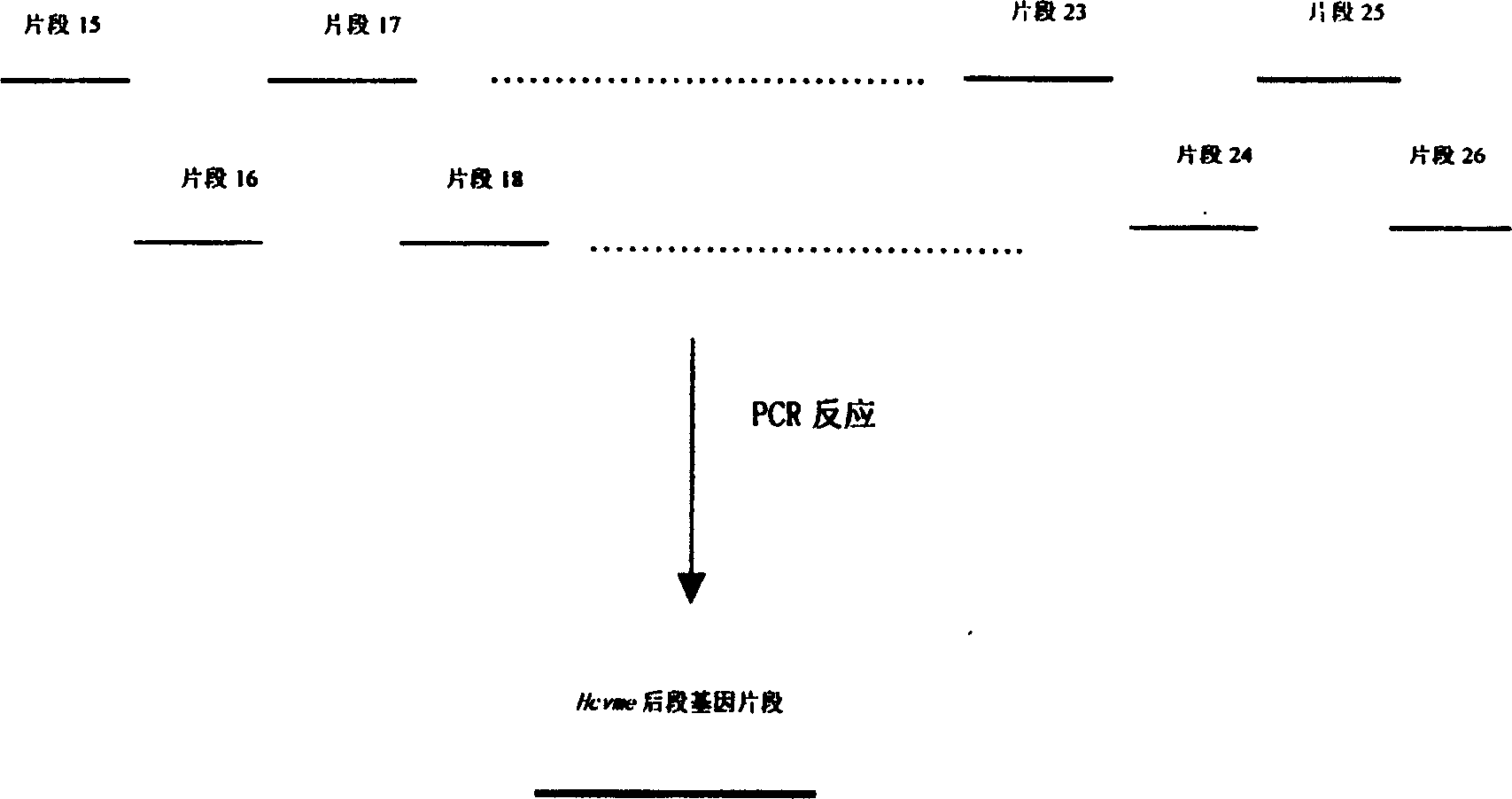Gene cloning of polyepitope antigen of hepatitis C virus and its coding sequence
A hepatitis C virus and coding sequence technology, applied in the direction of anti-receptor/cell surface antigen/cell surface determinant immunoglobulin, gene therapy, antiviral agent, etc., can solve the problem that the epitope is not ideal and cannot be used Hepatitis C vaccine preparation, unsatisfactory effect and other issues
- Summary
- Abstract
- Description
- Claims
- Application Information
AI Technical Summary
Problems solved by technology
Method used
Image
Examples
Embodiment Construction
[0027] The specific construction method of hepatitis C virus multi-epitope antigen gene clone (hcvme) is as follows:
[0028] 1. Synthesizing 26 oligonucleotide fragments required for the hcvme gene (see SEQ ID NO.2, synthesized by Shanghai Shenergy Gambling Biotechnology Co., Ltd.).
[0029] 2. The 26 oligonucleotide fragments are both primers and templates. The two gene fragments A and B before and after the PCR reaction are respectively synthesized. Both PCR synthesis and splicing reactions use Expand TM Long Template PCR System.
[0030] 1. The synthesis of gene fragment A in the front of hcvme ( figure 2 )
[0031] 0.5 μl each of oligonucleotide fragments 1-14 (30 μM)
[0032] dNTP (10mM) 2.0μl
[0033] 10×PCR buffer 5.0μl
[0034] DNA polymerase mixture (10 units / μl) 1.0μl
[0035] Sterilized redistilled water 35μl
[0036] The PCR reaction was performed under the following conditions: 35 cycles of 94°C for 30 seconds, 65°C for 30 seconds, and 74°C for 1 minute,...
PUM
 Login to View More
Login to View More Abstract
Description
Claims
Application Information
 Login to View More
Login to View More - R&D
- Intellectual Property
- Life Sciences
- Materials
- Tech Scout
- Unparalleled Data Quality
- Higher Quality Content
- 60% Fewer Hallucinations
Browse by: Latest US Patents, China's latest patents, Technical Efficacy Thesaurus, Application Domain, Technology Topic, Popular Technical Reports.
© 2025 PatSnap. All rights reserved.Legal|Privacy policy|Modern Slavery Act Transparency Statement|Sitemap|About US| Contact US: help@patsnap.com



